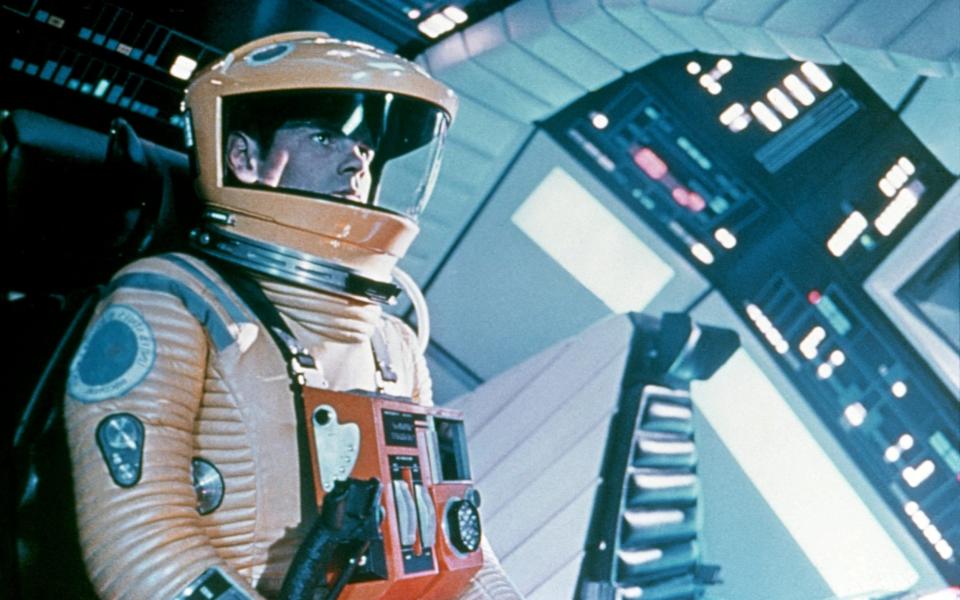Why Tom Cruise's SpaceX movie will be a waste of time – and space

Sending Tom Cruise into space doesn’t sound like an altogether bad idea. It’s no longer even a pipe dream: thanks to Elon Musk’s SpaceX project, in collaboration with Nasa, Cruise is preparing to shoot at least part of a feature on board the International Space Station, and now he has a writer-director attached – Doug Liman, who directed Cruise in Edge of Tomorrow and American Made.
We don’t know anything about how it will work, what the film would be about, and whether it will even come off, but there’s no harm speculating about what death-defying stunts Cruise is contemplating in an actual spacesuit in actual space.
Let’s face it, over the last few years, Cruise has seemed to leap further and further away from earthly reality, and we’re not just talking about those antics on Oprah’s couch. He was dangled 1,700ft above Dubai for the Burj Khalifa sequence in Mission: Impossible 4, which at the time was pitched as the craziest stunt an A-lister had ever been successfully insured to pull off. Not to be outdone in that series’s next instalment, dressed in a business suit, he attached himself to an Airbus 400 as it took off from RAF Wittering and reached 5,000ft in altitude.
And he’s recently dispensed with gravity altogether, filming one scene for The Mummy inside the so-called “vomit comet” – Nasa's zero gravity KC-135 aircraft, previously used for the scenes of weightless on-board action in Apollo 13. Putting Cruise into outright orbit only feels like the logical next step. The question is: for how long?
It’s hard to conceive of a feature-length blockbuster which is both set entirely in space, à la Gravity, and also shot there. True, James Cameron looked into the idea, and even talked to Cruise about it: back in 2000, Cameron had a contract with the Russians to shoot a high-end 3D documentary on the ISS, and then wondered about spinning this off into a feature. “We had some ideas for the story, but it was still conceptual,” he told Empire.
But think about the logistics for a moment. The level of training required for a single person to go into space is fairly daunting, even if they’re Elon Musk. Imagine an entire film crew trying to get up there. In 2008, the video-game entrepreneur Richard Garriott paid $30m to visit the ISS as a passenger and recorded his experience.
He even made a short film while on board, Apogee of Fear, which has a reasonable claim to be the first movie shot in space. It’s five minutes long, on YouTube, and a goofily amateurish non-event – not a precedent to fill any studio with huge optimism.
It feels more likely that Cruise-in-space would be conceived as a isolated set piece, like those Mission: Impossible stunts, but getting him up there in any insurable fashion would surely place massive restrictions on what he’s allowed to do, in or out of an airlock.
"Everything in space, the real stuff in space, is not action movie fast, it is slow and deliberate," Richard Garriott recently told Cnet. "The reality of filming in space may mean that either they will find that filming a lot of those action scenes will have been easier on Earth, where it's more controllable." (Garriott also revealed that even getting props to stay in one place was "a nightmare".)
Houston, we have a problem, and it's one of compromise. If those sections of the film were partly filled in with CG effects, Gravity-style – which, to be remotely exciting, they would pretty much have to be – how would the money shots of Cruise in real space even be distinguishable from fakery? Or if they blend in, like effects are meant to do, we would hardly know the difference, and then what’s the point? The only way to make the real stuff stand out would be to hobble the fakery and make it look worse.

We’ve known for a long time that cinema can launch us into space from the comfort of an effects house, and we buy it. Don’t take my word for it: listen to the Soviet astronaut Alexey Leonov. In 1965, he became the first human to walk in space. In 1968, he saw 2001: A Space Odyssey, and famously said of Kubrick’s film: “Now I feel I’ve been in space twice.”
If Hollywood’s simulated space odysseys can even fool the experts, what’s to be gained from doing one for real? The horrible suspicion – Apogee of Fear backs it up – is that “real” space on camera probably looks dodgier, less awe-inspiring, and almost certainly more banal than the version movies have imagined. Peeking out of a smudgy porthole is not going to cut it.
And whatever “real” space action Cruise attempts is highly likely to need touching-up for impact – because cinematic reality has always been a higher bar to hit than boring old real reality. Cruise touching off from Cape Canaveral – as a live event? Now that’s still appealing. Maybe the rest can be a deleted scene.

 Yahoo News
Yahoo News 
